Picture masking is likely one of the most necessary functionalities of any photograph modifying program. Regardless that picture masking implementation can range from {photograph} to program, the idea behind the picture masks is identical. Picture masks permit us to make use of selective modifying.
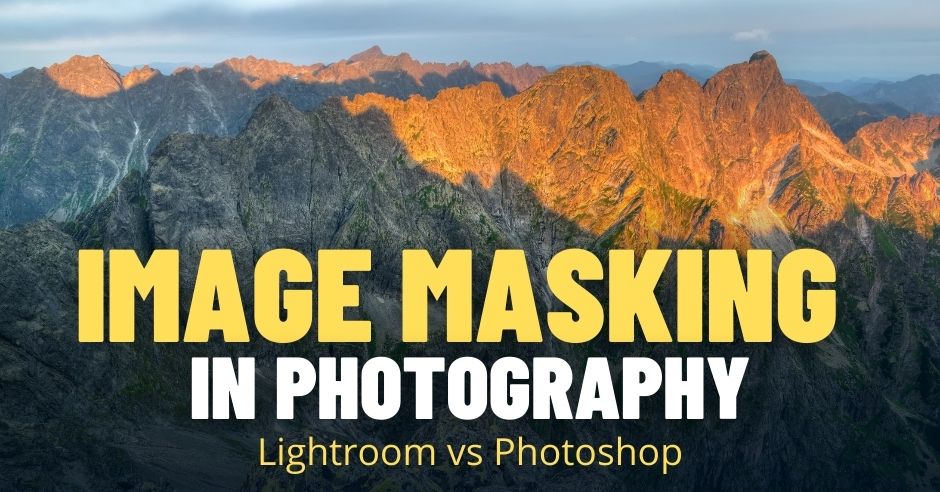

Let me clarify.
When analyzing any photograph, you may see that completely different areas have distinct traits and properties. It’s unlikely to use a collection of edits to a complete photograph and obtain the specified outcomes. The one technique to produce professionally-looking photographs is to edit completely different areas of the picture individually utilizing varied instruments and strategies.
That is when picture masking comes into play.
Picture masing helps us isolate (masks) particular areas of the picture and go away unmasked areas accessible for modifying.
What’s Picture Masking?
Picture masking is an important method in graphic design and photograph modifying, important for duties like compositing and selective modifying. It lets designers and photographers edit solely sure elements of a picture whereas protecting the remainder unchanged. Customized picture masks assist goal particular areas in pictures based mostly on parameters like colour, brightness, and objects or options resembling folks, animals, merchandise, sky, or water.
Picture masking has its roots in movie images. Within the darkroom, photographers used to cowl a part of the photograph paper, the one they didn’t need to be affected by the sunshine coming from the enlarger. The method of concealing the realm of the photograph paper is known as masking.
The idea of masking transitioned to digital images, however as a substitute of bodily masks, we use digital instruments to guard (masks) or reveal a part of the picture for selective modifying.


Picture Masking in Lightroom
When Lightroom was launched in 2007, it didn’t have any picture masking capabilities. The first operate of this system was photograph group. You possibly can apply easy edits resembling publicity, saturation to your complete picture solely; selective modifying didn’t exist. To make use of selective modifying with the assistance of picture masks, you needed to swap to Photoshop.
Over time, Adobe launched selective modifying to Lightroom (Adjustment Brush, Graduated Filter, Radial Filter), but it surely was not even near Photoshop’s masking capabilities.
The primary massive change occurred in 2018 with the introduction of the superior masking instruments, the Vary Masks. With new masking instruments, photographers may selectively goal areas of the picture based mostly on colour and luminance values. It was large. It modified the way in which I edited pictures in Lightroom. It allowed me to carry out 90-95% post-processing in Lightroom, and the necessity for Photoshop declined.
However the implementation of the Vary Masks was not very best. It had too many limitations. You possibly can not create a picture masks from scratch; you needed to apply Adjustment Brush, Graduated Filter, or Radial Filter first and create masking after.
And eventually, in October 2021, Adobe launched Lightroom model 11, the place they rebuilt and rearranged adjustment instruments. Essentially the most vital change was the introduction of a devoted Masking panel. Now, all of the masking instruments reside in a single place, not depending on any explicit device.


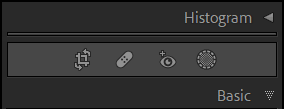

The modifying workflow is simple now. You create a number of picture masks concentrating on completely different picture areas first. Subsequent, you selectively edit these areas utilizing modifying sliders.


Kinds of Picture Masking in Lightroom
All masking in Lightroom is a non-destructive course of. It signifies that you by no means modify the unique picture, you all the time work on a JPEG preview.
For me picture masking is likely one of the most necessary capabilities of Lightroom, I take advantage of it with each picture I edit.
Let’s see what picture masking instruments we have now in Lightroom at this time.
1. AI Picture Masking: Choose Topic
Adobe all the time lagged behind the competitors, resembling Luminar, with the event instruments powered by synthetic intelligence (AI). But it surely appears to be like as whether it is beginning to change.
Lightroom launched two new AI instruments, and they’re very efficient.
To masks a picture you merely press the button and the Choose Topic AI device analyzes the photograph and identifies the primary topic; subsequent, it mechanically creates a fairly correct masks.
It’s broadly used for eradicating the background.


It’s the excellent companion for portrait and product photographers.
Additionally they launched a brand new characteristic, the Invert Masks, a must have for any picture masking device. After the primary object is chosen, you invert the masks and goal the background of your photograph with modifying instruments.
2. AI Picture Masking: Choose Sky
The Choose Sky performance is much like the Choose Topic, however as a substitute of the primary object, it identifies the realm of the sky and creates a masks.


When you want to masks a sky, you press the button and the AI Choose Sky device does the remainder.
The Choose Sky device works quick, and it is vitally correct. It’s a lot quicker and extra correct than utilizing the old-school strategy concentrating on the sky with the Brush or Linear Gradient instruments.
As soon as once more, you may invert the masks.
Right here is my workflow when utilizing new masking instruments. I click on the Choose Sky device, and it mechanically creates a picture masks with the sky chosen. Subsequent, I duplicate the masks and invert the choice. Now, I can edit the realm of the sky and foreground individually.
Priceless.


It’s evident that the Choose Sky device is the right companion for panorama photographers.
The one detrimental I see with the Choose Sky device is it cannot be used dynamically. I cannot put it aside as a Lightroom preset to generate a picture masks in any chosen picture dynamically.
I hope Adobe improves the performance of the Choose Sky sooner or later.
3. Brush Picture Masks
The previous Brush Adjustment device is now known as the Brush. It remodeled from an adjustment device to a pure masking device.
Let me clarify.
When utilizing previous Brush Adjustment, you possibly can transfer modifying sliders first after which begin portray with the comb over the photograph, visually making use of selective edits. With the brand new Brush device, you all the time begin with the masks creation. And solely when you find yourself proud of the masks, you start shifting sliders making use of desired results to the remoted space.
With the introduction of the Choose Object and Choose Sky AI instruments, the first operate of the Brush device in my modifying workflow is masks refining. If I’m not absolutely proud of the masks created by the Choose Object and Choose Sky instruments, I can fine-tune them with the Brush.


4. Linear Gradient Picture Masks
The Linear Gradient is a brand new title for the previous Graduated Filter device. The device transformation is much like the Brush device. From the adjustment, it remodeled right into a pure masking device.
Now, I usually mix the Choose Sky with the Linear Gradient concentrating on space of the sky and making the highest of the sky darker.


5. Radial Gradient Picture Masks
The Radial Gradient follows the suite of the Brush and Linear Gradient instruments. It has a brand new title; it’s Radial Gradient now as a substitute of Radial Filter. And it carries masking performance now.
However the way in which you utilize it is vitally much like the earlier model. The one distinction right here is as a substitute of 1 circle that signifies the chosen space, there are two. The inside circle signifies the place the opaque space ends, and the gradient begins.
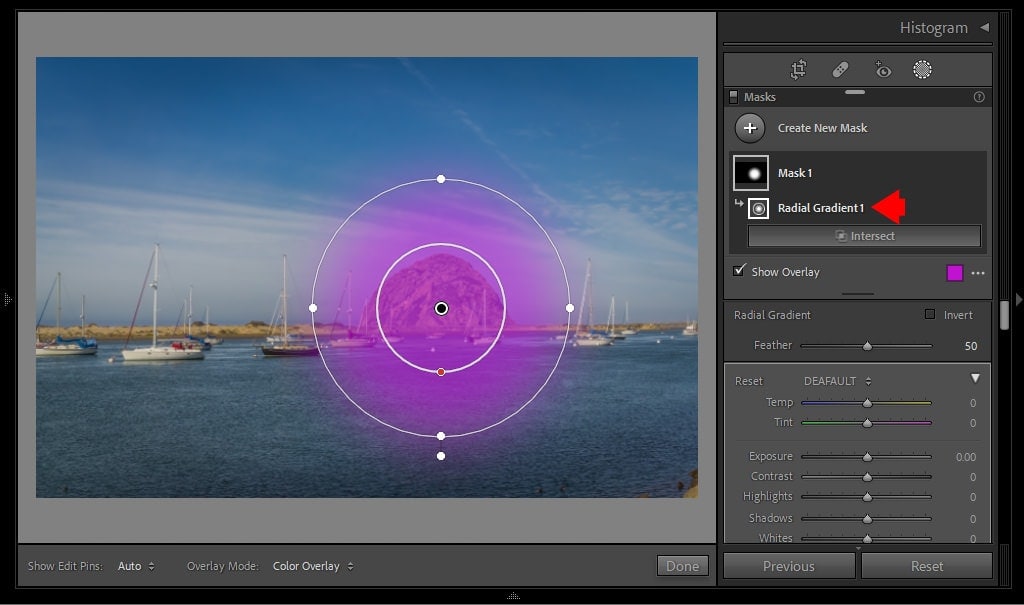

6. Coloration Vary Picture Masks
The Coloration Vary masking device helps you create masks based mostly on particular colour values or vary of colours.
Regardless that I usually used the unique Vary Masks, it had too many limitations. First, it was hooked up to Brush, Linear Gradient, or Radial Gradient instruments, and also you solely may modify the masks created by these instruments. In fact, I had workarounds, but it surely felt as if implementation wasn’t well-thought.
Now, virtually all limitations are gone. Each the Coloration Vary and Luminance Vary are separated and never depending on any instruments.
Enormous enchancment.


I usually use the Coloration Vary masks when modifying the sky space in my landscapes. I goal solely the blue hues of the sky and hold shiny areas of the clouds protected. And if I edit the sundown photograph, I would create a separate Coloration masks concentrating on solely orange and pink hues of the sky.


However, it has the identical limitation because the Choose Sky picture masks; you may’t use it dynamically. A minimum of at this second, it’s not possible to include the Coloration Vary masks creation into Lightroom presets. It solely works with the particular photograph.
7. Luminance Vary Picture Masks
If the Coloration Vary device permits you to create a customized masks based mostly on the colour values, then the Luminance Vary device generates masks based mostly on the brightness (luminance) of the pixels.
The brand new Luminance Vary masking device is my favourite addition to the masking toolset. I take advantage of it most frequently together with the Choose Sky AI device.
For instance, I take advantage of the Choose Sky device with the Invert possibility checked to pick every thing besides the sky. Subsequent, I take advantage of the Luminance Vary to focus on the midtone pixels solely. Now, I can increase the distinction with out affecting shadows, highlights, and the sky.


And what’s the most vital characteristic of the brand new Luminance Vary device is it may be used dynamically. I already created a set of distinction presets concentrating on midtone values solely. After I apply the preset to any chosen photograph, Lightroom creates a picture masks on the fly based mostly on the luminance values of the chosen picture.
8. Depth Vary
Adobe launched the Depth Vary device some time in the past, however I used to be important due to its very restricted use. It solely works with the brand new HEIC format, Apple’s proprietary model of Excessive-Effectivity Picture File format.
The Depth Vary device creates a picture masks based mostly on how shut the a part of the picture to the digicam. In concept, it’s a nice characteristic that means that you can selectively edit solely the background space of the photograph and hold areas near the digicam untouched.
The issue is that HEIC photographs with the depth map may be produced solely utilizing the iPhones with the twin digicam beginning with iPhone 7+.
Since I’m an Android consumer, I’ve no use for this device. However even if in case you have a brand new model of iPhone, you get higher picture high quality when taking pictures RAW format (DNG) than HEIC.
9. Superior Masking in Lightroom
With the introduction of eight new picture masking instruments, you’ve loads of choices for creating exact and complex masks for selective modifying. However you may take it even additional with the brand new Add and Subtract options.
Now you may mix all of the masking instruments making selective modifying much more versatile.
Here’s a sensible utility of the Subtract characteristic.
To selectively edit the sky space, I take advantage of the Choose Sky device first. When Lightroom creates the masks, I hit the Subtract button. Subsequent, I choose the Luminance Vary device and subtract the highlights from the present masks created by the Choose Sky device. When I’m achieved, I’ve the choice concentrating on solely darker areas of the sky. I can selectively edit the sky with out affecting the brilliant clouds.
The chosen space of the picture is highlighted in pink (you may change the colour).
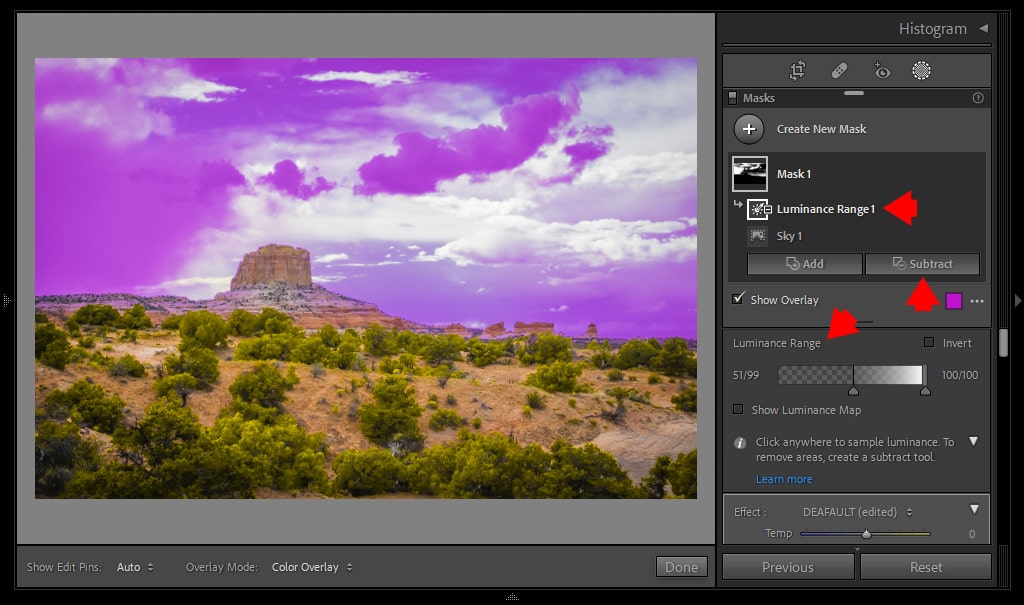

The Add characteristic masks works the identical means, however you develop the masks as a substitute of subtracting a portion of it. For instance, you need to use the Brush device to develop the masks by portray over desired areas of the picture.
Plus, there may be one other masking characteristic I virtually missed. It’s the Intersect possibility. You allow it when urgent down the ALT key. It permits you to create a masking choice by intersecting 2 masks.
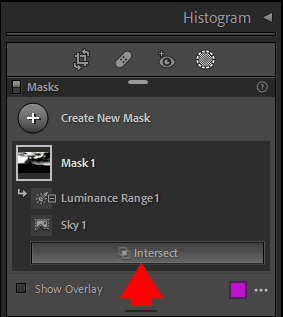

The Shortcomings of Lightroom Masking Instruments
I want that Adobe made the Choose Sky and the Coloration Vary instruments absolutely dynamic, as I discussed above. However I imagine it’s a work in progress, and within the close to future, they’ll enhance the performance of the masking instruments. I’ll replace my Lightroom Speedy Enhancing system once they do it by incorporating all of the masking instruments in my preset-based photograph modifying workflow. It would permit me to edit pictures a lot quicker and with larger precision.
In Lightroom, you may solely edit one picture at a time. There isn’t any performance to create a composite or collage.
However the primary shortcoming of the brand new masking instruments, the way in which I see it, is that after creating the specified masks, I would not have entry to all of the modifying instruments accessible in Lightroom.


For instance, my favourite Lightroom modifying instruments are positioned in HSL/Coloration panel. They permit me to focus on particular person colours selectively. I would not have entry to the HSL/Coloration panel with the brand new masking instruments. The identical goes with the Tone Curve and Coloration Grading panels; they’re unavailable when utilizing the masking performance.
It appears to be like as if Adobe arbitrarily determined what instruments I want and instruments I don’t. The problem wouldn’t exist if Adobe used the layer-based strategy because it exists in most modifying packages, together with Photoshop. However, for some inexplicable motive, they refuse to provide us layers in Lightroom, the primary characteristic that made Photoshop so highly effective.
Picture Masking in Adobe Photoshop
I transitioned to images from graphic design. For years, I used Photoshop as my main modifying and compositing device as a graphic designer. And what I realized from my graphic design years is that to grasp Photoshop, it’s a must to grasp tips on how to create exact picks and masks.
Photoshop has a way more in depth choice of masking instruments and is far more highly effective in comparison with Lightroom.
This text goals to not train you to make use of masking instruments in Photoshop as a result of it’s not possible. However as a substitute to provide you an thought of masking choices accessible in Photoshop. So you may determine if you want to be taught Photoshop or Lightroom picture masking instruments can be enough.
1. Layer Masks
Photoshop is a layer-based program with an virtually limitless variety of layers. And for every layer, you may have a devoted transparency masks.
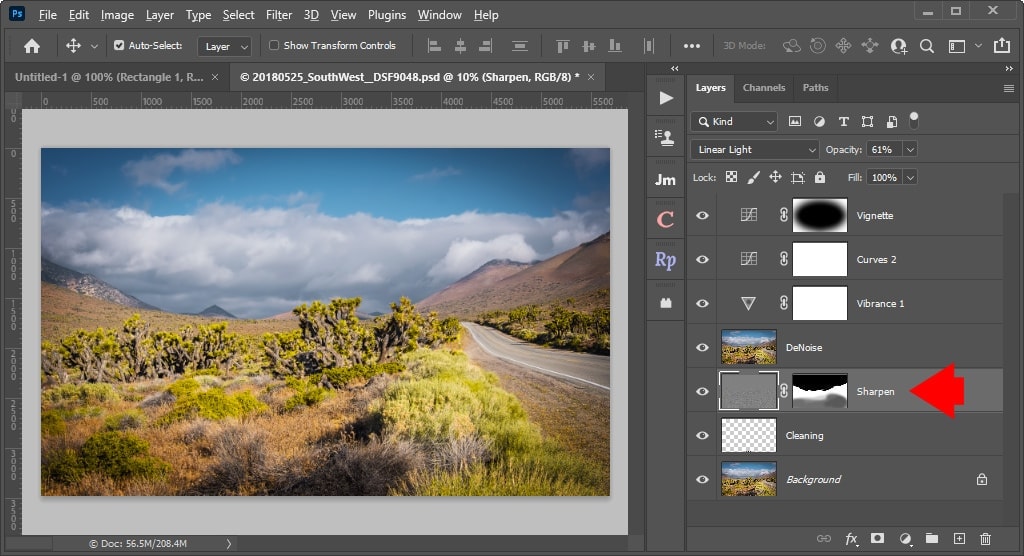

If you create a layer masks in Photoshop, you make a part of the layer invisible.
Lightroom doesn’t have layers, however you may have a number of masks hooked up to any photograph you edit.
2. Vector Layer Masks
The vector layer masking performance means that you can create resolution-independent masks in Photoshop. This characteristic doesn’t exist in Lightroom, however it’s not often utilized in photograph modifying.
I solely used vector layer masks when working with high-resolution photographs meant for print. I by no means felt the necessity for vector masks in my images.
3. Adjustment Masks
Adjustment layers are nondestructive edits you may apply to any layer in Photoshop. And for every adjustment layer, you’ve a transparency masks. Unique adjustment instruments in Lightroom (brush, graduate filter, radial filter) labored exactly as adjustment layers in Photoshop. With the newest revamping of masking instruments in Lightroom, they work barely completely different however nonetheless akin to adjustment layers and masks in Photoshop.


4. Clipping Masks
Clipping masks in Photoshop allow you to management transparency masks in a single layer based mostly on the content material of one other layer. The performance is broadly utilized in graphic design and picture compositing. Such a characteristic will not be attainable in Lightroom as a result of it has no layers. However you gained’t miss it if you’re solely all for photograph modifying.
5. Alpha Masks
Alpha Masks is a sophisticated kind of masks and a really highly effective choice device in Photoshop. The masking data is saved in one of many picture’s colour channels (alpha channel) and may be accessed by varied packages outdoors of Photoshop.


After I was working as a graphic designer producing graphics for broadcast tv, 80% of my time was spent creating refined alpha masks in Photoshop. It allowed overlaying a number of photographs on a TV display screen, preserving transparency in several elements of a picture.
Regardless that it’s a highly effective characteristic, you don’t miss it when processing pictures. And there’s no such a characteristic in Lightroom
6. Choose Sky
The Choose Sky device is powered by synthetic intelligence and machine studying. It detects and selects the sky space with precision and accuracy. I’m sure the device makes use of the identical algorithm because the Choose Sky device in Lightroom. Each instruments produce comparable outcomes.


7. Choose Object
The identical goes with the Choose-Object device, which is powered by AI and similar to the way it works to the Choose Object device in Lightroom.
8. Coloration Vary
The Coloration Vary is a really helpful methodology of masking. You’ll be able to create customized masks based mostly on a particular colour or vary of colours in any given picture. For a very long time, I missed such performance in Lightroom. Nonetheless since Adobe launched the Coloration Vary in Lightroom in model 8, the necessity for Photoshop colour masking capabilities disappeared.
9. Luminosity Masks
I imagine the implementation of Luminance Vary in Lightroom is extra user-friendly and logical than Photoshop’s Luminosity Masks. In Lightroom, you may create a customized masks based mostly on luminance (brightness) values in seconds. In Photoshop, it’s extra highly effective however far more difficult. Persist with Lightroom.


As you may see, regardless that Photoshop is a way more highly effective and feature-rich program, the necessity for Photoshop in photograph modifying diminishes quick. And almost about picture masking functionalities, I don’t see an enormous benefit of Photoshop over Lightroom.
Plus, to completely make the most of Photoshop superior options, you want to rasterize photographs first. In Lightroom, you may keep in a RAW modifying setting profiting from nondestructive modifying.
Picture Masking in Picture Enhancing: Conclusion
I’ve been expressing issues about Adobe’s lack of actual innovation in Lightroom over the previous few years, feeling that many rivals had been forward. Nonetheless, with the introduction of recent picture masking instruments, there may be hope that Adobe has lastly acknowledged the necessity for innovation. This means that picture masking can assist deliver actually revolutionary instruments and options to Lightroom.

